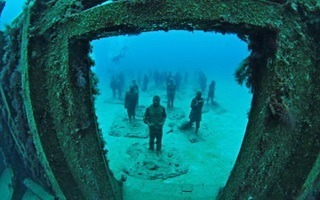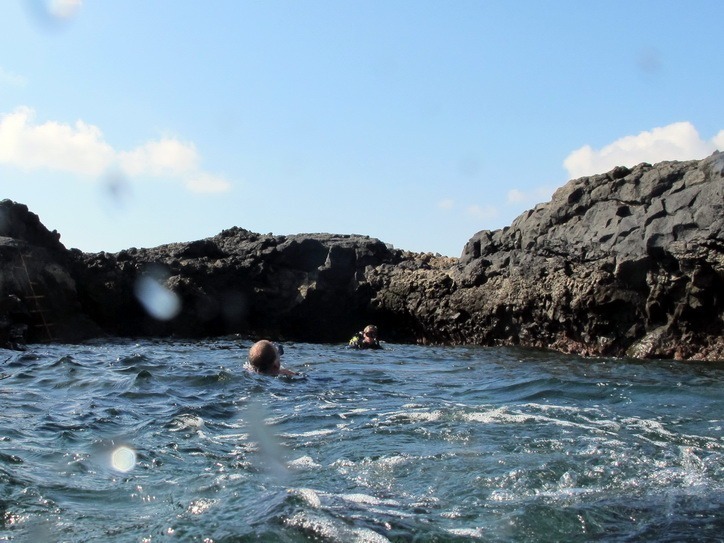
Atlantic museum
Atlantic Museum
- Max. 18m
- Boat
- Min. OWD
- Playa Blanca

The Atlantic Museum is the first underwater art museum in Europe. It is situated in front of the coast in Playa Blanca and can be accessed only with a boat.
You descend on a safety buoy, which makes it accessible for beginners as well. The guide will take you along a given route, which leads you to a max. depth of 17m in approx. 45min. You will see a large artificial reef formed by sculptures made with neutral pH concrete that over time encourages a variety of life to grow on them. Every statue has its own story to tell and is symbolic of a topical commentary on society today. Our specially trained Eco Dive Guides will give you further details to the meaning of the different statues.



It is not allowed to touch the statues, as they are covered already in marine life. Jason de Caires Taylor, the artist who built this museum, wants to highlight the bond between art and nature. His intention is to make visitors more aware of the importance of the sea and all of its natural resources.
The Atlantic Museum offers not only statues but also a lot of marine life. Triggerfish, angelsharks and big shoals of fish live in the area surrounding the dive site.
If you want to dive this divesite, drop us a line and we will arrange something.













